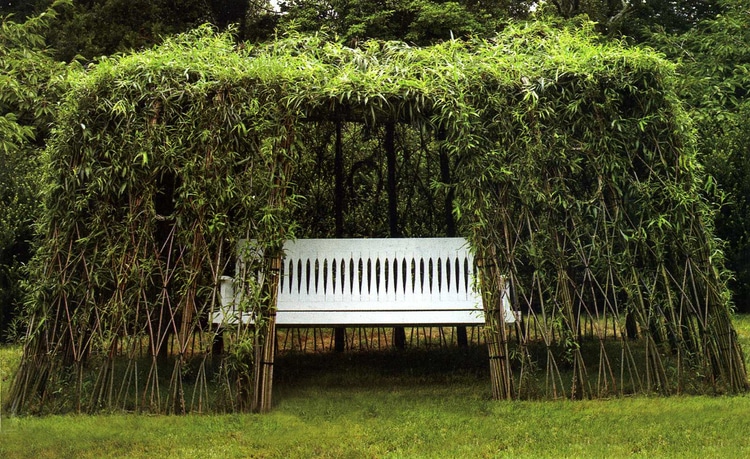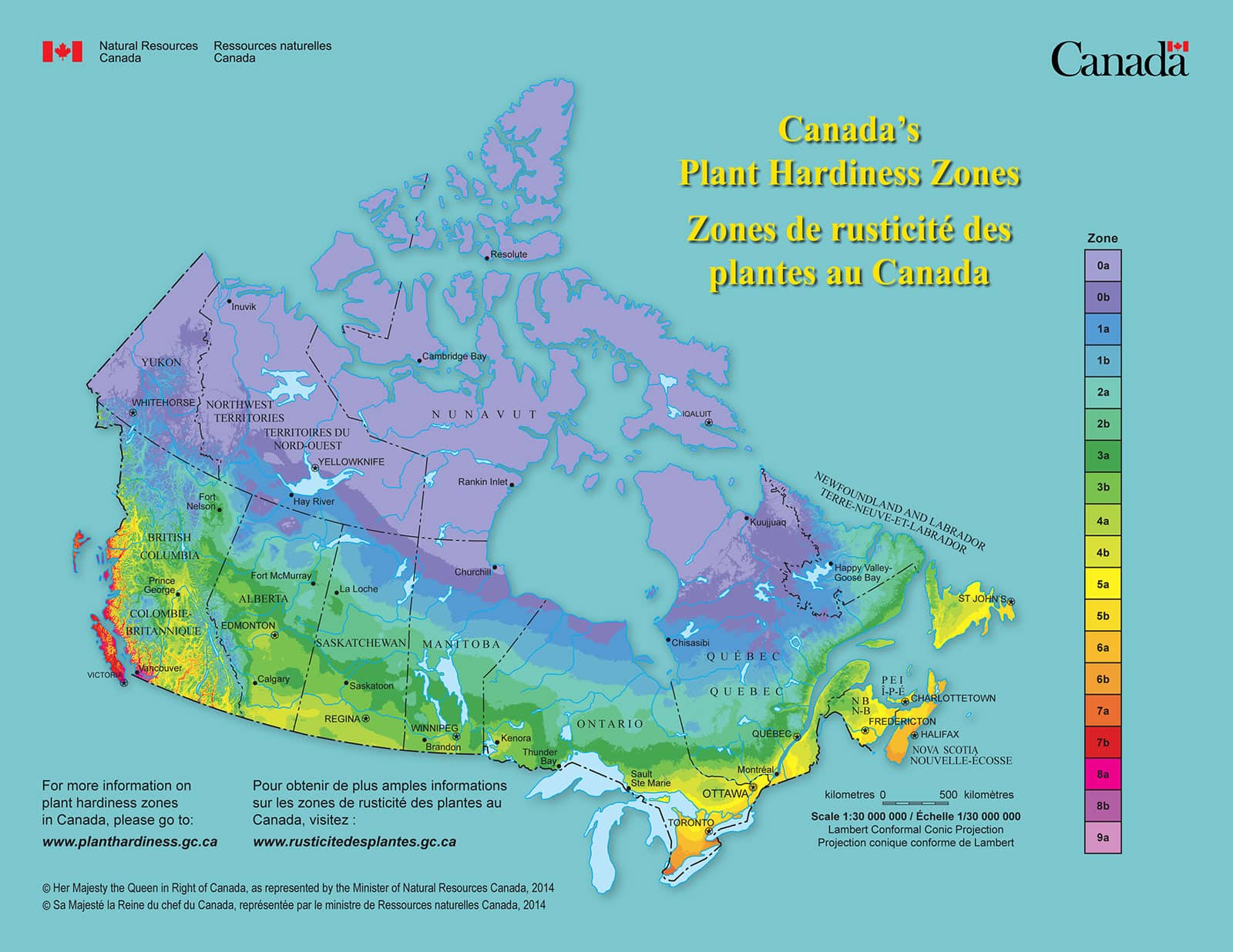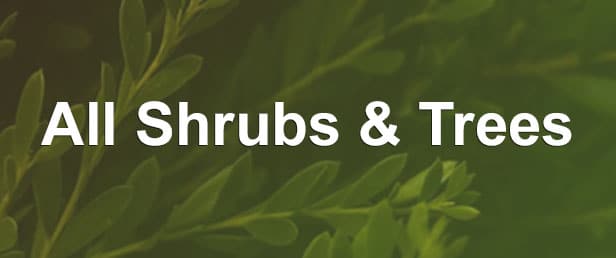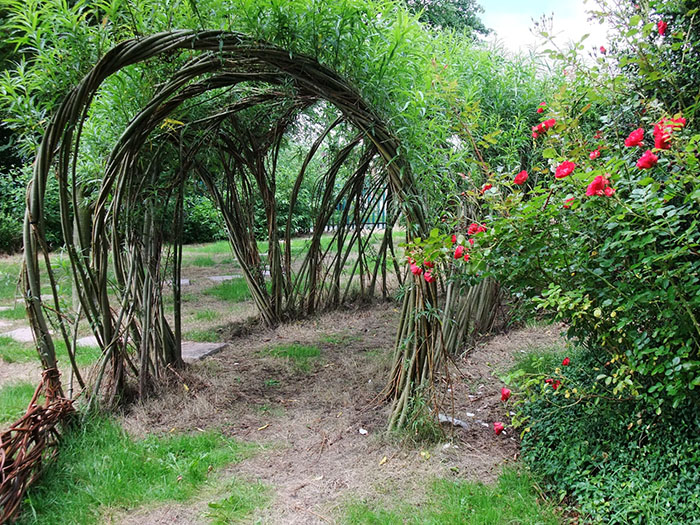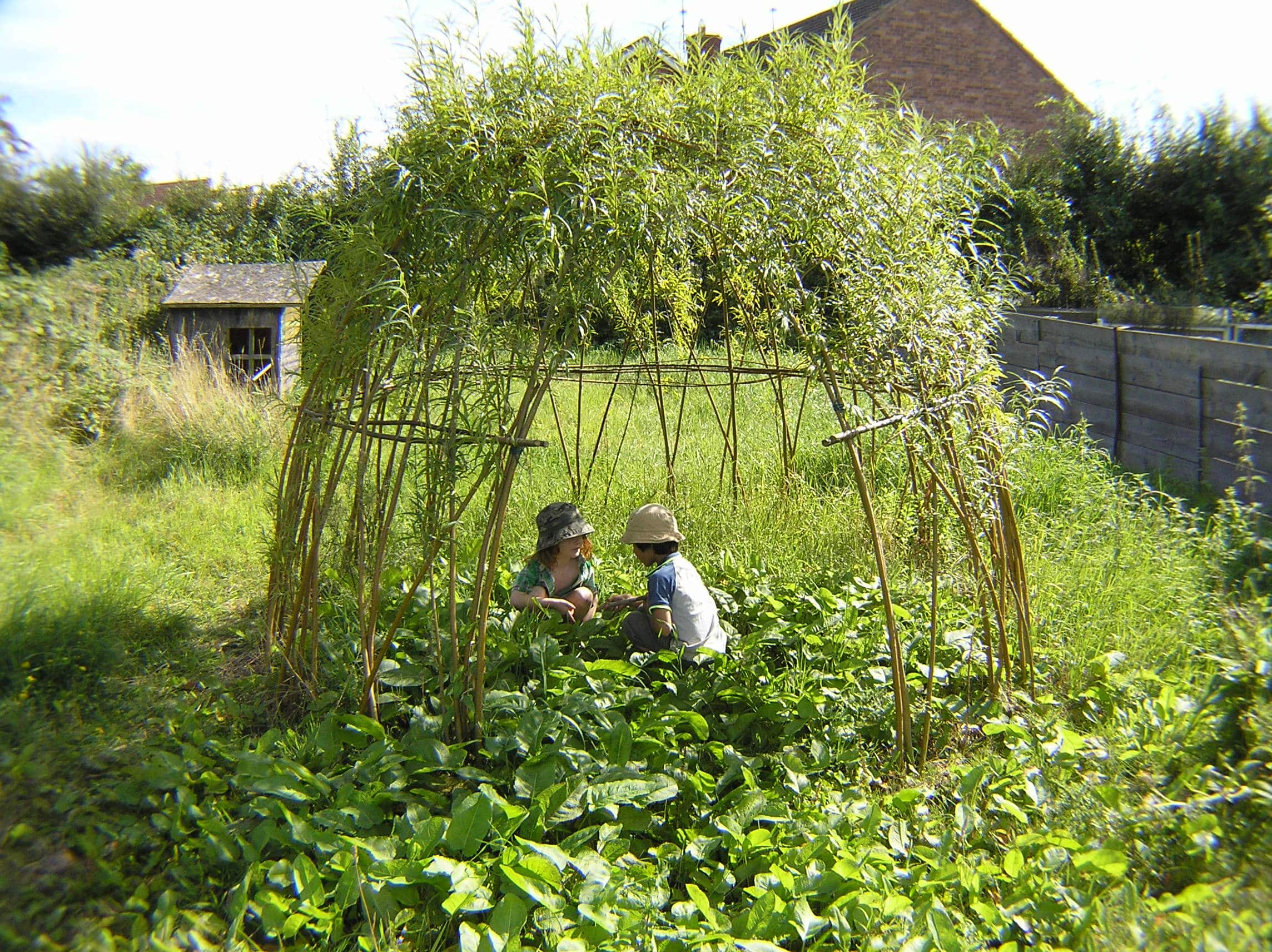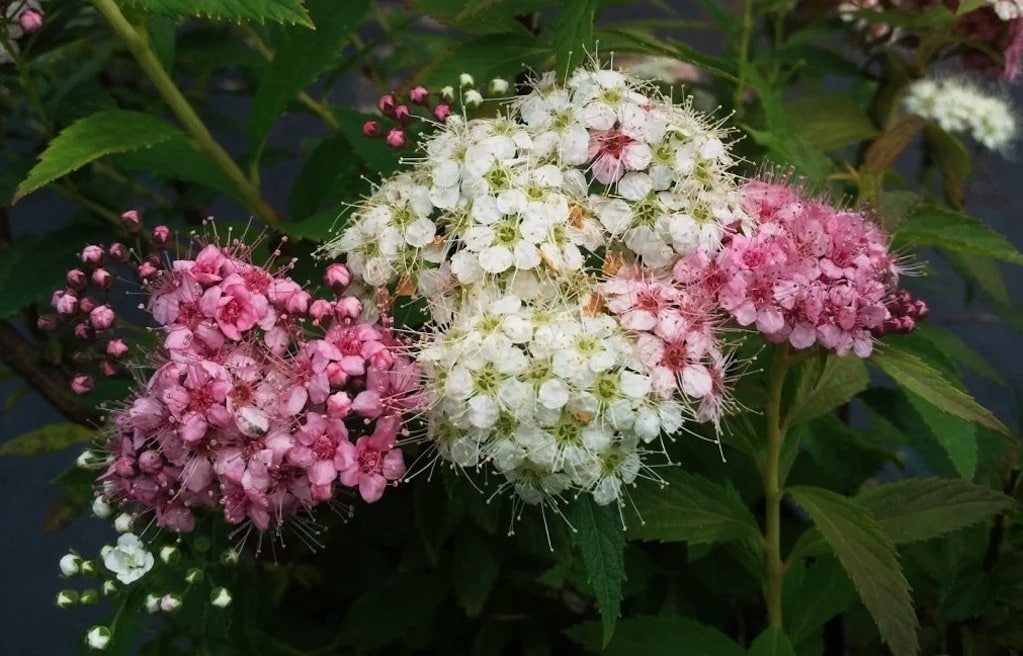Willow Structures and Fedges
Share this:
Create Magic in Your Garden with Living Willow Structures
Salix is an incredible genus with a wide variety of colourful stems that are both strong and pliable. It also has an almost magical ability to quickly form roots from any branch that is cut, and stuck into the ground. These qualities make willow an incomparable natural building material with which to create living willow structures.
Multi-Season Interest
Garden design elements that last throughout the year have big impact; and living structures have an enormous amount to offer the creative gardener in this regard:
- Early Blooms - Imagine a small dome in the middle of the garden, with an unexpected sweet halo of pink catkins in the early spring! With their beautiful buds and flowers, willows herald spring in a way that few other species do. (Check out Giant Korso Willow – it has large showy catkins that emerge a beautiful pink!)
- Pretty spring foliage - The unfurling of willow leaves has already begun when the rest of the garden starts to awaken in the spring. Living Structures make a beautiful backdrop for other perennials, vines and grasses as they come to life.
- Wonderful Summer Movement - Willow structures are dense with blue green to dark green leaves, with beautiful contrasting undersides. Breezes cause the leaves to flash with sage and silver (especially in varieties such as Bowhayes Willow that has 6” - 8” long leaves) creating a wonderful display of movement throughout the summer and fall.
- Wildlife Habitat - Living structures provide year-round habitat to birds; and areas of safe summer and fall grazing to small mammals.
- Winter Enchantment – Snow-covered willow branches adorned with fairy lights in the winter, add enchantment to the hibernal landscape.
- Harmonious Spaces – There is nothing quite like natural willow branch structures for both play and respite. They are places of the soul, where we can rest and invent, converse and meditate. We can bring some balance into our lives by simply gazing up at the sun dappled summer leaves, or the stars in the winter sky.
CHECK OUT ANOTHER TWO GREAT WILLOWS TO BUILD WITH!
Fedge = Hedge + Fence
Take advantage of willow's rapid growth, and dense foliage to quickly, beautifully and inexpensively grow fedges and screens. With an assortment of willow cane (rod) lengths you can create a variety of fedges that define space, create enclosures, or establish privacy. Tie and weave together lattice or open basket weave patterned fedges, and they will soon be filled in with new growth. Keep your fedges as trim, or leafy as you want!
Fedge ideas for your garden:
- Enclose outdoor spaces to make wonderful architectural rooms, and protect and beautify flower and vegetable gardens;
- Edge winding paths to lend drama to a walkway, and support for vines and ramblers;
- Create layers of interest in the landscape through a series of fedges, leading to a dome, arbour, or willow covered seating area; or
- Produce a sense of mystery and intrigue through partially obstructing views; or focal points, by framing others.
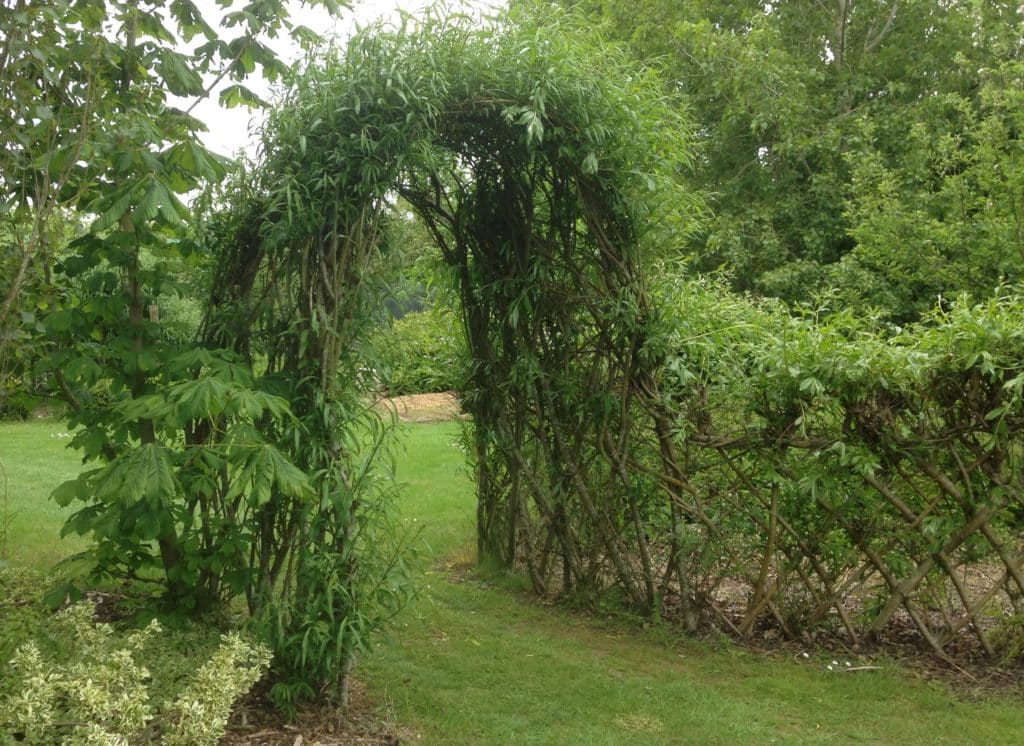
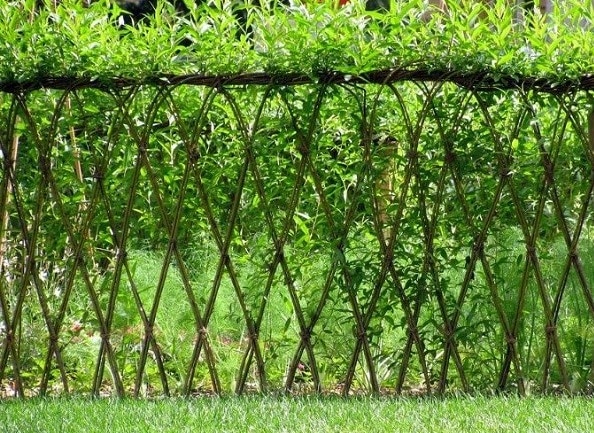
Domes, Tunnels, Obelisks and Silly Animals
Living willow structures bring charm and whimsy to the garden, are amazing play spaces for kids and adults alike, add architectural interest, and support for vines and climbers. They can be destinations, pathways, or backdrops in the garden – providing respite from the manufactured spaces we often inhabit, and bringing magic into our time in the garden.
There are endless DIY living willow projects that you can do with your kids. Building a dome together is a great project that will enable everyone to get a feel for the materials and process, before tackling a more advanced project like tunnels and animals.


The Basics of Building with Living Willow
Be sure to use rods that are extra long so that they can be pushed into the ground a good 6” - 8”; that are pliable enough to be arched in to a structure; and sturdy enough to work as supports. Our catalogue of cultivars with especially robust rods are perfect for the job.
- Plan your basic structure on paper, and plot it out in the garden with stakes and strong twine. This does not have to be fancy - just a basic design to scale, with dimensions.
- You will need clean, sharp pruning shears to cut your rods. You can take softwood cuttings in early summer, or hardwood cuttings in winter, which will root quickly once in the ground.
- Begin by using your sturdiest rods as upright supports at the ends of fedges, or openings in your structures. Push them deeply enough into the ground to feel secure.
- Drive stakes in, or place rocks to mark 1 foot intervals along the perimeter. Lay down landscape fabric inside of structure perimeter stakes, if you want the interior to be grass free. (A good idea for those of us in tick land.)
- Use your next sturdiest rods, pushed diagonally into the ground at the marked 1 foot intervals. (When this is done, fill in the spaces between these intervals with finer rods. If you are working on a fedge you may want to leave these finer rods out, so that your lattice pattern shows more clearly.)
- Add vertical support rods every 4 or 5 feet.
- Once you have all of your diagonal and vertical supports in to the ground, you can tie the rods together, where they intersect one another.
- For fedges: add a willow top rail, weave ends into the end support rods and the top rail, and tie together.
- For domes, animals and tunnels: either weave rod ends over the dome, or collect ends and tie-off like a pony-tail with strong twine.
- Make sure you water, water, water until the willow rods establish good roots (a few weeks).
It will take a year or so for the willow to leaf out, but it’s a wonderful year of transformation watching the bare rods leaf out, and the structure begin to fill in. Most importantly, have fun building, and playing and relaxing in your creations.
